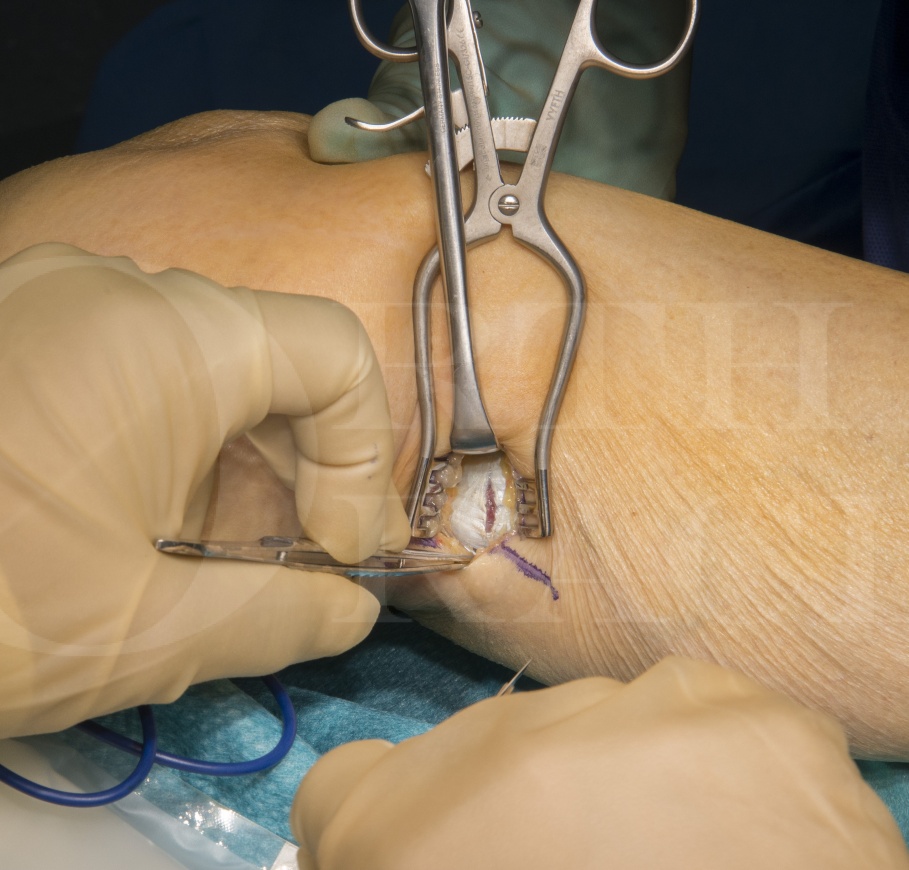Achilles tendon: Gastrocnemius recession
Overview

Subscribe to get full access to this operation and the extensive Foot Surgery Atlas.
Learn the Achilles tendon: Gastrocnemius recession surgical technique with step by step instructions on OrthOracle. Our e-learning platform contains high resolution images and a certified CME of the Achilles tendon: Gastrocnemius recession surgical procedure.
Tightness of the achilles tendon and in particular tightness of the gastrocnemius has been implicated in a number of clinical conditions effecting the foot and ankle. These include pes planovalgus, posteromedial tibial stress syndrome, achilles tendinopathy, metatarsalgia and plantar fascitis.
The gastrocnemius is a bipennate muscle composed of a longer medial and shorter lateral head. The medial head takes origin from on the posterior femoral surface and lies proximal to the medial condyle and posterior to the insertion of the adductor magnus muscle. The lateral head takes origin from the lateral epicondylar surface of the femur. Both heads then form a conjoined aponeurosis which together with the aponeurosis of the soleus muscle form the achilles tendon, inserting into the os calcis. During normal function the effect of contraction of these muscle bellies results in ankle flexion and secondarily knee flexion.
There are various methods to lengthen the gastrocnemius-achilles complex including open Z-lengthening or triple cutting the achilles tendon, lengthening of the tendon of Gastrocnemius as it conjoins the soleus tendon, or a “slide” procedure to the muscle belly of gastrocnemius. The method that I prefer is one popularised by Samuel. l. Barouk from Bordeaux and Matt Solan FRCS at the Royal Surrey County Hospital. It involves dividing the aponeurosis of the medial head of gastrocnemius, which allows a controlled and easily varied lengthening to be done.
The procedure is simple to perform, can be done on an day case basis, and importantly does not require the patient to have the ankle immobilised postoperatively. I have also found that it does not cause significant weakening of the achilles tendon function nor wasting of the calf, unlike procedures in the mid and distal part of the tendon which achieve the same correction.
Author: Kartik Hariharan FRCS
Institution: Aneuran Bevan University Health Board, Wales.
Clinicians should seek clarification on whether any implant demonstrated is licensed for use in their own country.
In the USA contact: fda.gov
In the UK contact: gov.uk
In the EU contact: ema.europa.eu



















